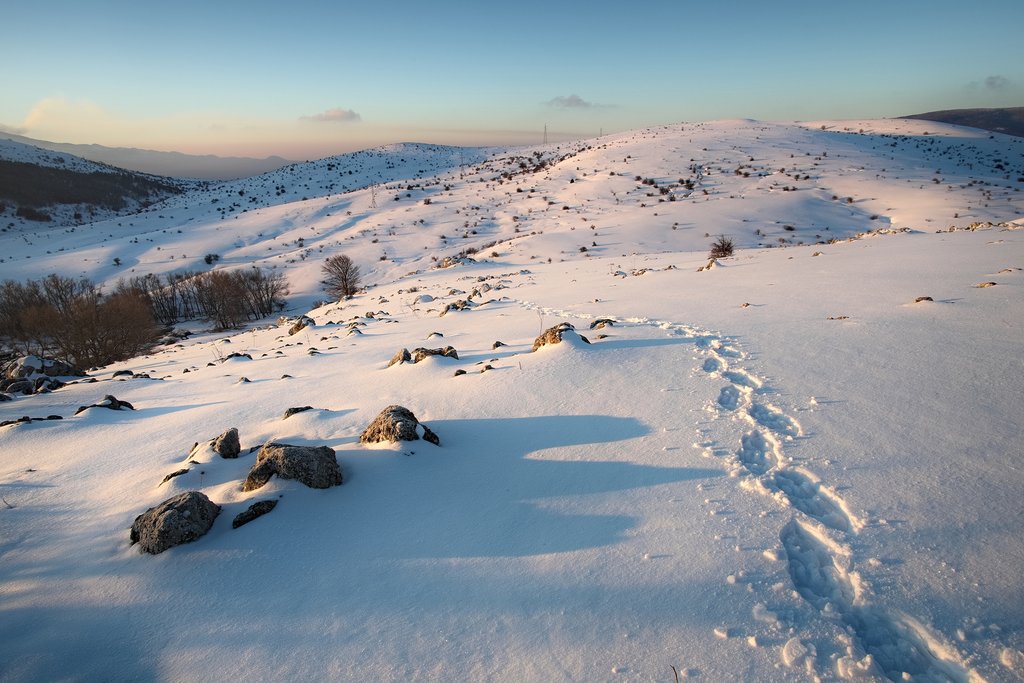Weather
One of the coldest and wettest times to visit Sicily, cities along the coast, like Palermo, see an average of 54°F (12°C), and if the sirocco winds blow, temperatures can increase to around 68°F (20˚C). And while Sicily as a whole experiences mild, fairly sunny weather with over 18 days of rain, the island has varying climates. Along the coasts, the climate is Mediterranean. You can expect it to be mild and rainy in the winter.
Messina, on the other hand, has its own microclimate and is a couple of degrees warmer. Meanwhile, Sicily's hilly interior experiences cooler temps with potential snow. Anything above 3,300 feet (1000 m) is cold and sees enough snow to entice skiers/snowboarders to their slopes.
Crowds & Costs
If you find yourself in Sicily the first week of January, you can expect a slight uptick in accommodation prices and airfare, with museums and shops extending their hours to cater to the Christmas holidays. And those who visit any other time of the month can expect next to no crowds and budget-friendly accommodation. The whole of the island remains quiet: hotels reduce their rates if they aren't altogether closed (many businesses that rely on the beach close for the season), and ferries scale down their routes to and from the smaller islands.
Ski season is in full swing, and vacationers head to the slopes, though, unlike other more popular Italian destinations, Sicilian resorts are uncrowded and less costly. Note, too, that many historical attractions close in the offseason for repairs and upkeep. And because Sicilians practice the art of siesta, businesses, and other attractions will generally be closed from 1:30 pm to 4:30 pm daily.
Chat with a local specialist who can help organize your trip.
Where to Go
Up until the Epiphany (January 6), you can catch the tail end of Sicily's Christmas festivities. An excellent place to start is the capital of the region, Palermo, for a taste of culture: art galleries and museums, striking baroque architecture, and top-notch restaurants. More than that, however, are the series of Christmas markets, plays, and parades strewn throughout the island leading up to the Epiphany. For a lively procession of residents clad in traditional costume parade through the streets, head to Piana degli Albanesi, a former Albanian colony founded at the end of the 15th century in Palermo province.
Meanwhile, if Carnevale happens to fall in January, no matter where you find yourself, you're in for a treat. Acireale, just north of Catania, hosts one of the country's most celebrated fêtes dating back to the 16th century. Join in the weeklong ruckus as you take in the scene: cavalcades of masked participants and giant floats, and aromatic statues made of lemons and oranges.
Skiing and snowboarding fans that find themselves in Sicily might like to consider experiencing the handful of runs on Europe's largest volcano. Mount Etna has two resorts, Linguaglossa on the north side and Nicolosi on the south side, both offering incredible views over the Italian island. For a more traditional ski experience, if not shorter runs, there's also Piano Battaglia in the Madonie mountains.
What to Do
After the Christmas season has come to an end with the Epiphany, enjoy a quiet month of cultural exploration (barring Carnivale if it lands in January). Renting a car is your best option for optimal sightseeing, and if the weather turns to rain, head indoors to take in any number of museums and art galleries. There's the International Documentary Center of Mafia in Corleone and the Regional Gallery of Sicily in Palermo, the Archaeological Museum in Agrigento, and Syracuse's Bellomo Palace Regional Gallery for masterful works of art ranging from historical medieval and Renaissance to modern works.
Combine history with pleasure and enjoy an afternoon soaking in a historic geothermal hot spring found in many towns and cities throughout the Italian island. Visit Terme Segestane in Castellammare del Golfo, the source believed to be where the Nymphs in Greek legend wanted to restore Hercules or relax in thermal waters in Sciacca, the island’s oldest source. Alternatively, follow a day of skiing/snowboarding with an evening warming in a bathhouse in Santa Venera al Pozzo, just south of Acireale.
And, if you appreciate a deal, the winter shopping season begins in January around Epiphany. Look for the saldi signs in the windows of stores and boutiques and see about snagging a bargain or two.
Events in January
Epiphany. The Italian Christmas season is similar to other Western nations in many ways (including celebrating Christmas Eve and Christmas Day), but one event in which it differs is La Festa dell'Epifania. Held on January 6 and marking the end of Italy's "12 days of Christmas." children across the country get excited as this is when an old witch called La Befana leaves gifts in their stockings.
Carnevale. Held annually 40 days before Easter on the liturgical calendar, Italy's Carnival celebrations occur sometime between January and April but often fall in February. This is the biggest event of the month by far, with celebrations in cities and towns throughout the island.
Sagra della Sfincia di Priescia. If you visit Sicily in January, you might be in time to enjoy Sagra della Sfincia di Priescia in Montelepre. This is a town festival dedicated to a sweet dish typical of the area. During January, there will be various stalls offering the sfincia sprinkled with cinnamon and sugar that you can try for free.
More Helpful Information
Sicily in December
Sicily in February
Best Time to Visit Sicily
How Many Days to Spend in Sicily
